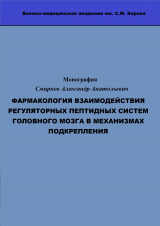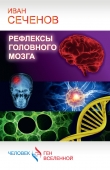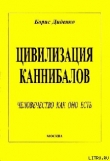
Текст книги "ФАРМАКОЛОГИЯ ВЗАИМОДЕЙСТВИЯ РЕГУЛЯТОРНЫХ ПЕПТИДНЫХ СИСТЕМ ГОЛОВНОГО МОЗГА В МЕХАНИЗМАХ ПОДКРЕПЛЕНИЯ"
Автор книги: Александр Смирнов
Жанр:
Медицина
сообщить о нарушении
Текущая страница: 6 (всего у книги 7 страниц)
Cole B.J. Propranolol antagonizes the enhanced conditioned fear produced by corticotropin releasing factor /Cole B.J., Koob G.F. // J. Pharmacol. Exp. Ther. 1988. V. 247. P.902–910.
Conover K. Competition and summation between rewarding effects of sucrose and lateral hypothalamic stimulation in the rat /Conover K., Shizgal P. // Behav. Neurosci. 1994. V.108. P.537–548.
Cook C.J. Stress induces CRF release in the paraventricular nucleus, and both CRF and GABA release in the amygdale /Cook C.J. // Physiol. Behav. 2004. V. 82. P.751–762.
Cryan J.F. Assessing antidepressant activity in rodents: recent developments and future needs /Cryan J.F., Markou A., Lucki I. // Trends Pharmacol. Sci. 2002. V. 23. P.238–245.
Cummings. A preprandial rise in plasma ghrelin levels suggests a role in meal initiation in humans. /Cummings, D.E., Purnell, J.Q., Frayo, R.S., Schmidova, K., Wisse, B.E., Weigle, D.S. // Diabetes 50 (8) – 2001 – Р.1714–1719.
Cummings. Plasma ghrelin levels and hunger scores in humans initiating meals voluntarily without time– and food-related cues. /Cummings, D.E., Frayo, R.S., Marmonier, C., Aubert, R., Chapelot, D. //American Journal of Physiology – Endocrinologyand Metabolism 287 (2) – 2004 – Р.297–304.
Date, Y. Orexins, orexigenic hypothalamic peptides, interact with autonomic, neuroendocrine and neuroregulatory systems. /Y. Date, Y. Ueta, H. Yamashita et al. // Prog. Natl. Acad. Sci. – 1999. – Vol.96. – P.748–753.
De Lecea, L. Hypocretins and the neurobiology of sleep-wake mechanisms. /L. De Lecea // Prog. Brain Res. – 2012. – Vol.196. – P.234–248.
De Souza E.B. Corticotropin-releasing factor receptors are widely distributed within the rat central nervous system: an autoradiographic study /De Souza E.B., Insel T.R., Perrin M.H. et al. // J. Neurosci. 1985. V. 5. P.3189–3203.
De Souza E.B. Corticotropin-releasing factor receptors in rat pituitary gland: autoradiographic localization /De Souza E.B., Perrin M.H., Rivier J. et al. // Brain Res. 1984. V. 296. P.202–207.
Di Chiara G. Dopamine and drug addiction: the nucleus accumbens shell connection. /Di Chiara G, Bassareo V, Fenu S, De Luca MA, Spina L, Cadoni C, Acquas E, Carboni E, Valentini V, Lecca D. // Neuropharmacology 2004;47(suppl 1):227–241.
Di Sebastiano, A. R. Orexin mediates initiation of sexual behavior in sexually naïve male rats, but is not critical for sexual performance. /A. R. Di Sebastiano, S. Yong-Yow, L. Wagner // Hormones and Behavior. – 2010. – Vol.58. – P.397–404.
Dickson, S.L. Blockade of central nicotine acetylcholine receptor signaling attenuate ghrelin-induced food intake in rodents. /Dickson, S.L., Hrabovszky, E., Hansson, C., Jerlhag, E., Alvarez-Crespo, M., Skibicka, K.P., Molnar, C.S., Liposits, Z., Engel, J.A., Egecioglu, E. // Neuroscience 171 (4) – 2010 – Р.1180–1186.
Doyon W.M. Dopamine activity in the nucleus accumbens during consummatory phases of oral ethanol self-administration. /Doyon W.M, York JL, Diaz L.M, Samson H.H, Czachowski C.L, Gonzales R.A. // AlcoholClin Exp Res 2003; 27:1573–1582.
Dunn A.J. Physiological and behavioral responses to corticotropin-releasing factor administration: is CRF a mediator of anxiety or stress responses? /Dunn A.J., Berridge C.W. // Brain Res. Brain Res. Rev. 1990. V. 15. P.71–100.
Dunn A.J., File S.E. Corticotropin-releasing factor has an anxiogenic action in the social interaction test. /Dunn A.J., File S.E. // Horm. Behav. 1987. V. 21. P.193–202.
Dworkin S.I. Lack of an effect of 6-hydroxydopamine lesions of the nucleus accumbens on intravenous morphine self-administration. /Dworkin S.I, Guerin G.F, Co C, Goeders N.E, Smith J.E. // Pharmacol Biochem Behav 1988;30:1051–1057
Edwards, C. M. The effect of the orexins on food intake comparison with neuropeptide Y, melanin concentrating hormone and galanin. /C. M. Edwards, S. Abusnana, S. Sunter et al. // J. Endocrinol. – 1999. – Vol.160. – P.7–12
Egecioglu, E. Ghrelin increases intake of rewarding food in rodents. /Egecioglu, E., Jerlhag, E., Salome, N., Skibicka, K.P., Haage, D., Bohlooly, Y.M., Andersson, D., Bjursell, M., Perrissoud, D., Engel, J.A., Dickson, S.L. //Addiction Biology 15 (3) – 2010 – Р.304–311.
Egecioglu, E. Hedonic and incentive signals for body weight control. /Egecioglu, E., Skibicka, K.P., Hansson, C., Alvarez-Crespo, M., Friberg, A., Jerlhag, E., Engel, J.A., Dickson, S.L. // Reviews in Endocrine and Metabolic Disorders, in press (Epub ahead of print). doi:10.1007/s11154-011-9166-4.
Elias, C. F. Chemically defined projections linking the mediobasal hypothalamus and the lateral hypothalamus area. /C. F. Elias, C. D Saper, E. Maratos-Flier et al. // J. Comp. Neurol. – 1998. – Vol.402. – P.442–459
Ericson, M. The smoking cessation medication varenicline attenuates alcohol and nicotine interactions in the rat mesolimbic dopamine system. /Ericson, M., Löf, E., Stomberg, R., Soderpalm, B. // Journal of Pharmacology and Experimental Therapeutics329 (1) – 2009 – Р.225–230.
Fadel J. Anatomical substrates of orexin-dopamine interactions: lateral hypothalamic projections to the ventral tegmental area. /Fadel J., Deutch A.Y. // Neuroscience. 2002; 111:379–87. []
Faulconbridge, L.F. Hyperphagic effects of brainstem ghrelin administration. /Faulconbridge, L.F., Cummings, D.E., Kaplan, J.M., Grill, H.J. //Diabetes 52 (9), 2260–2265. Grigson, P.S., 2002. Like drugs for chocolate: separate rewards modulated by common mechanisms? Physiology & Behavior 76 (3) – 2003 – Р.345–346.
Funk C.K. Corticotropin-releasing factor within the central nucleus of the amygdala mediates enhanced ethanol self-administration in withdrawn, ethanoldependent rats. /Funk C.K., O’Dell L.E., Crawford E.F., Koob G.F. // J Neurosci 2006;26:11324–11332.
Gallistel C.R. Measuring the subjective magnitude of brain stimulation reward by titration with rate of reward. /Gallistel C.R., Leon M. // Behav. Neurosci. 1991. V.105. №6. P.913–925.
Gastard M. The caudal sublenticular region/anterior amygdaloid area is the only part of the rat forebrain and mesopontine tegmentum occupied by magnocelluar cholinergic neurons that receives outputs from the central division of extended amygdala /Gastard M., Jensen S.L., Martin J.R., Williams E.A., Zahm D.S. // Brain Res. 2002. V.957. P.207–222.
George O. CRF-CRF1 system activation mediates withdrawal-induced increases in nicotine selfadministration in nicotine-dependent rats. /George O, Ghozland S, Azar MR, Cottone P, Zorrilla EP, Parsons LH, O’Dell LE, Richardson HN, Koob GF. // Proc Natl Acad Sci USA 2007;104:17198–17203.
Goeders N.E. The impact of stress on addiction /Goeders N.E. // Eur. Neuropsychopharmacol. 2003. V. 13. P.435–441.
Gotter, A. L. Orexin receptors as therapeutic drug targets. /A. L. Gotter, A. J. Roecker, R. Hargreaves et al. // Progress in Brain Research. – 2012. – Vol.198, – P.48–56.
Greenwell T.N. Corticotropin-releasing factor-1 receptor antagonists decrease heroin self-administration in long-, but not short-access rats. /Greenwell T.N., Funk C.K., Cottone P., Richardson H.N., Chen S.A., Rice K., Lee M.J., Zorrilla E.P., Koob G.F. // Addict Biol. 2009 in press
Griebel G. 4-(2-Chloro-4-methoxy-5-methylphenyl)-N-[(1S)-2-cyclopropyl-1-(3-fluoro-4-methylphenyl)ethyl]5-methyl-N-(2-propynyl)-1, 3-thiazol-2-amine hydrochloride (SSR125543A), a potent and selective corticotrophin-releasing factor(1) receptor antagonist: II. Characterization in rodent models of stress-related disorders /Griebel G., Simiand J., Steinberg R. et al. // J. Pharmacol. Exp. Ther. 2002. V. 301. P.333–345.
Griebel G. Characterization of the behavioral profile of the non-peptide CRF receptor antagonist CP-154, 526 in anxiety models in rodents, comparison with diazepam and buspirone. /Griebel G., Perrault G., Sanger D.J. // Psychopharmacology (Berl.). 1998. V. 138. P.55–66.
Grivel, J. The wake-promoting hypocretin/orexin neurons change their response to horadrenaline after sleep deprivation. /J. Grivel, V. Cvetkovic, L. Bayer et al. // J.Neurosci. – 2005. – Vol.25, – P.4127–4130.
Gualillo O. Effect of food restriction on ghrelin in normal-cycling female rats and in pregnancy. /Gualillo, O., Caminos, J.E., Nogueiras, R., Seoane, L.M., Arvat, E., Ghigo, E., Casanueva, F.F., Dieguez, C. // Obesity Research 10 (7) – 2002 – Р.682–687.
Guan, X.M. Distribution of mRNA encoding the growth hormone secretagogue receptor in brain and peripheral tissues. /Guan, X.M., Yu, H., Palyha, O.C., McKee, K.K., Feighner, S.D., Sirinathsinghji, D.J.S., Smith, R.G., VanderPloeg, L.H.T., Howard, A.D. // Molecular Brain Research 48 (1) – 1997 – Р.23–29.
Hand G.A. Differential release of corticotropin-releasing hormone (CRH) in the amygdala during different types of stressors /Hand G.A., Hewitt C.B., Fulk L.J. et al. // Brain Res. 2002. V. 949. P.122–130.
Hara, J. C. Genetic ablation of orexin neurons in mice results in narcolepsy, hypophagia, and obesity. /J. Hara, C. T. Beuckmann, T. Nambu et al. // Neuron. – 2001. – Vol.30, – P.345–354.
Haynes, A. C. A selective orexin-1 receptor antagonist reduces food consumption in male and female rats. /A. C. Haynes, B. Jackson, H. Chapman et al. // Regulatory Peptides. – 2000. – Vol.96, – P.45–51.
Haynes, A. C. Anorectic, thermogenic and anti-obesity activity of a selective orexin-1 receptor antagonist in ob/ob mice. /A. C. Haynes, H. Chapman, C Taylor et al. // Regulatory Peptides. – 2002. – Vol.104, – P.153–159.
Hernandez G. Prolonged rewarding stimulation of the rat medial forebrain bundle: neurochemical and behavioral consequences. /Hernandez G, Hamdani S, Rajabi H, Conover K, Stewart J, Arvanitogiannis A, Shizgal P. // Behav Neurosci 2006;120:888–904.
Heyser C.J., Central administration of an opiate antagonist decreases oral ethanol self-administration in rats. /Heyser C.J., Roberts A.J., Schulteis G., Koob G.F. // Alcohol Clin Exp Res 1999;23:1468–1476.
Holst, B. Constitutive ghrelin receptor activity as a signaling set-point in appetite regulation Trends in Pharmacological. /Holst, B., Schwartz, T.W. // Sciences 25 (3) – 2004 – Р.113–117.
Holst, B. High constitutive signaling of the ghrelin receptor – identification of a potent inverse agonist. /Holst, B., Cygankiewicz, A., Jensen, T.H., Ankersen, M., Schwartz, T.W // Molecular Endocrinology 17 (11) – 2003 – Р.2201–2210.
Howard, A.D. A receptor in pituitary and hypothalamus that functions in growth hormone release. /Howard, A.D., Feighner, S.D., Cully, D.F., Arena, J.P., Liberator, P.A., Rosenblum, C.I., Hamelin, M., Hreniuk, D.L., Palyha, O.C., Anderson, J., Paress, P.S., Diaz, C., Chou, M., Liu, K.K., McKee, K.K., Pong, S.S., Chaung, L.Y., Elbrecht, A., Dashkevicz, M., Heavens, R., Rigby, M., Sirinathsinghji, D.J.S., Dean, D.C., Melillo, D.G., Patchett, A.A., Nargund, R., Griffin, P.R., DeMartino, J.A., Gupta, S.K., Schaeffer, J.M., Smith, R.G., VanderPloeg, L.H.T. // Science 273 (5277) – 1996 – Р.974–977.
Ida T. Possible involvement of orexin in the stress reaction in rats. /Ida T., Nakahara K., Murakami T., Hanada R., Nakazato M., Murakami N. // BiochemBiophys Res Commun. 2000; 270:318–23. []
Ikemoto S. Dissociations between appetitive and consummatory responses by pharmacological manipulations of rewardrelevant brain regions /Ikemoto S., Panksepp J. // Behav. Neurosci. 1996. V.110. №2. P.331–345.
Jerlhag E. Alpha-conotoxin MII-sensitive nicotinic acetylcholine receptors are involved in mediating the ghrelin-induced locomotor stimulation and dopamine overflow in nucleus accumbens. / Jerlhag, E., Egecioglu, E., Dickson, S.L., Svensson, L., Engel, J.A. // European Neuropsychopharmacolology 18 (7) – 2008 – Р.508–518.
Jerlhag E. Ghrelin receptor antagonism attenuates cocaine– and amphetamine-induced locomotor stimulation, accumbal dopamine release, and conditioned place preference. /Jerlhag, E., Egecioglu, E., Dickson, S.L., Engel, J.A. // Psychopharmacology (Berl) 211 (4) – 2010 – Р.415–422.
Jerlhag E. Glutamatergic regulation of ghrelin-induced activation of the mesolimbic dopamine system. /Jerlhag, E., Egecioglu, E., Dickson, S.L., Engel, J.A. // AddictionBiology 16 (1) – 2011 – Р.82–91.
Jerlhag, E. Ghrelin administration into tegmental areas stimulates locomotor activity and increases extracellular concentration of dopamine in the nucleus accumbens. /Jerlhag, E., Egecioglu, E., Dickson, S.L., Douhan, A., Svensson, L., Engel, J.A. // Addiction Biology 12 (1) – 2007 – Р.6–16.
Jerlhag, E. Ghrelin stimulates locomotor activity and accumbal dopamine-overflow via central cholinergic systems in mice: implications for its involvement in brain reward. /Jerlhag, E., Egecioglu, E., Dickson, S.L., Andersson, M., Svensson, L., Engel, J.A. // Addiction Biology 11 (1) – 2006a – Р.45–54.
Jerlhag, E. Requirement of central ghrelin signaling for alcohol reward. /Jerlhag, E., Egecioglu, E., Landgren, S., Salome, N., Heilig, M., Moechars, D., Datta., R., Perrissoud, D., Dickson, S.L., Engel, J.A. // Proceedings of the National Academy of Sciences of the United States of America 106 (27) – 2009 – Р.11318–11323.
Jerlhag, E. Role of the subunit composition of central nicotinic acetylcholine receptors for the stimulatory and dopamine-enhancing effects of ethanol. /Jerlhag, E., Grotli, M., Luthman, K., Svensson, L., Engel, J.A. // Alcohol and Alcoholism 41 (5) – 2006b – Р.486–493.
Jerlhag, E. Systemic administration of ghrelin induces conditioned place preference and stimulates accumbal dopamine. /Jerlhag, E. // Addiction Biology 13 (3–4) – 2008 – Р.358–363.
Jerlhag, E. The alcohol induced locomotor stimulation and accumbal dopamine release is suppressed in ghrelin knockout mice. /Jerlhag, E., Landgren, S., Egecioglu, E., Dickson, S.L., Engel, J.A. // Alcohol, in press (Epub ahead of print) doi:10.1016/j.alcohol.2010.10.002.
Jiang, H. Ghrelin amplifies dopamine signaling by cross talk involving formation of growth hormone secretagogue receptor/ dopamine receptor subtype 1 heterodimers. /Jiang, H., Betancourt, L., Smith, R.G. // Molecular Endocrinology 20(8) – 2006 – Р.1772–1785.
Jones G.A. Conduction velocities and membrane properties of different classes of rat septohippocampal neurons recorded in vitro / Jones G.A., Norris S.K., Henderson Z. // J. Physiol. 1999. V.517. P.867–877.
Jӧhren, O. Preproorexin and orexin receptor mRNAs are differentially expressed in peripheral tissues of male and female rats. /O. Jӧhren, S. J. Neidert, M. Kummer et al. // Endocrinology. – 2001. – Vol.142. – P.3324–3331.
Kalivas P.W. Brain circuitry and the reinstatement of cocaine-seeking behavior. / Kalivas P.W., McFarland K. // Psychopharmacology (Berl) 2003;168:44–56. []
Kalivas P.W. Neural systems for behavioral activation and reward. /Kalivas P.W., Nakamura M. // Curr. Opin. Neurobiol. 1999. V.9. P.223–227.
Kaur, S. Ghrelin receptor antagonism decreases alcohol consumption and activation of perioculomotor urocortin-containing neurons. /Kaur, S., Ryabinin, A.E. // Alcoholism – Clinical and Experimental Research 34 (9) – 2010 – Р.1525–1534.
Keck M.E. The anxiolytic effect of the CRH(1) receptor antagonist R121919 depends on innate emotionality in rats. /Keck M.E., Welt T., Wigger A. et al. // Eur. J. Neurosci. 2001. V. 13. P.373–380.
Kelley A.E. The neuroscience of natural rewards: relevance to addictive drugs. /Kelley A.E., Berridge K.C. // J. Neurosci. 2002. V.22. №9. P.3306–3311.
Kojima M. Ghrelin is a growth-hormone-releasing acylated peptide from stomach. /Kojima, M., Hosoda, H., Date, Y., Nakazato, M., Matsuo, H., Kangawa, K. // Nature 402(6762) – 1999 – Р.656–660.
Kojima M. Ghrelin is a growth-hormone-releasing acylated peptide from stomach. /Kojima M, Hosoda H, Date Y, Nakazato M, Matsuo H, et al // Nature. 1999; 402:656–660. [PubMed]
Koob G.F. A role for brain stress systems in addiction. /Koob G.F. // Neuron 2008; 59:11–34.
Koob G.F. A role for corticotropin-releasing factor and urocortin in behavioral responses to stressors. /Koob G.F., Heinrichs S.C. // Brain Res. 1999. Vol.848. P.141-152.
Koob G.F. Addiction and the brain antireward system. /Koob G.F., Le Moal M. //Ann Rev Psychol 2008b;59:29–53.
Koob G.F. Alcoholism: allostasis and beyond. /Koob G.F. // Alcohol Clin. Exp. Res. 2003. V. 27. P.232–243.
Koob G.F. Corticotropin-releasing factor, norepinephrine and stress. /Koob G.F. // Biol Psychiatry 1999; 46:1167–1180.
Koob G.F. Drug abuse: Hedonic homeostatic dysregulation. /Koob G.F., Le Moal M. //Science 1997; 278:52–58.
Koob G.F. Drugs of abuse: anatomy, pharmacology, and function of reward pathways. /Koob G.F. // TrendsPharmacol Sci 1992; 13:177–184.
Koob G.F. Neuroadaptive mechanisms of addiction: studies on the extended amygdala. /Koob G.F. // Eur. Neuropsychopharmacol. 2003. V.13. P.442–452.
Koob G.F. Neuroscience of addiction. / Koob G.F., Sanna P.P., Bloom F.E // Neuron. 1998; 21:467–76. []
Koob G.F. Stress, corticotropin-releasing factor, and drug addiction. /Koob G.F. // Ann. N.Y. Acad. Sci. 1999. V. 897. P.27–45.
Koob G.F. The role of the striatopallidal and extended amygdala systems in drug addiction. /Koob G.F. // Ann. N.Y. Acad. Sci. 1999. V.877. P.445–460.
Kornetsky C. Euphorigenic drugs: Effects on the reward pathways of the brain. /Kornetsky C., Esposito R.U. // Fed Proc 1979;38:2473–2476.
Kornetsky C. The role of the olfactory tubercle in the effects of cocaine, morphine, and brain-stimulation reward. /Kornetsky C., Huston-Lyons D., Porrino L.J // Brain Res. 1991. V.541. P.75–81.
Korotkova T.M. Selective excitation of GABAergic neurons in the substantianigra of the rat by orexin/hypocretin in vitro. / Korotkova T.M., Eriksson K.S, Haas H.L., Brown R.E // RegulPept. 2002;104:83–89. []
Kostich W.A. Molecular identification and analysis of a novel human corticotropin-releasing factor (CRF) receptor: the CRF2gamma receptor. /Kostich W.A., Chen A., Sperle K., Largent B.L. // Mol. Endocrinol. 1998. V. 12. P.1077–1085.
Kretschmer B.D. Functional aspects of the ventral pallidum. /Kretschmer B.D. // Amino Acids. 2000. V.19. P.201–210.
Lall, S. Growth hormone (GH)-independent stimulation of adiposity by GH secretagogues. /Lall, S., Tung, L.Y.C., Ohlsson, C., Jansson, J.O., Dickson, S.L. // Biochemicaland Biophysical Research Communications 280 (1) – 2001 – Р.132–138.
Landgren, S. Association of Pro-Ghrelin and GHSR1A gene polymorphisms and haplotypes with heavy alcohol use and body mass. /Landgren, S., Jerlhag, E., Zetterberg, H., Gonzalez-Quintela, A., Campos, J., Olofsson, U., Nilsson, S., Blennow, K., Engel, J.A. // Alcoholism – Clinical and Experimental Research 32 (12) – 2008 – Р.2054–2061.
Landgren, S. Genetic variation of the ghrelin signaling system in females with severe alcohol dependence. /Landgren, S., Jerlhag, E., Hallman, J., Oreland, L., Lissner, L., Strandhagen, E., Thelle, D.S., Zetterberg, H., Blennow, K., Engel, J.A. // Alcoholism –Clinical and Experimental Research 34 (9) – 2010 – Р.1519–1524.
Larsson, A. Neurochemical and behavioral studies on ethanol and nicotine interactions. /Larsson, A., Engel, J.A. // Neuroscience and Biobehavioral Reviews 27 (8) – 2004 – Р.713–720.
Larsson, A. Voluntary ethanol intake increases extracellular acetylcholine levels in the ventral tegmental area in the rat. /Larsson, A., Edstrom, L., Svensson, L., Soderpalm, B., Engel, J.A. // Alcohol and Alcoholism 40 (5) – 2005 – Р.349–358.
Laviolette S.R. GABAA receptors in the ventral tegmental area control bidirectional reward signalling between dopaminergic and non-dopamingeric neural motivational systems. /Laviolette S.R., van der Kooy D. // Eur. J. Neurosci. 2001. V.13. P.1009–1015.
Le Doux J.E. Different projections of the central amygdaloid nucleus mediate autonomic and behavioral correlates of conditioned fear. /Le Doux J.E., Iwata J., Cicchetti P., Reis D.J. // J. Neurosci 1988; 8:2517–2529.
Lelas S. Anxiolytic-like effects of the corticotropin-releasing factor1 (CRF1) antagonist DMP904 [4-(3-pentylamino)-2,7-dimethyl-8-(2-methyl-4-methoxyphenyl)-pyrazolo-[1,5-a]-pyrimidine] administered acutely or chronically at doses occupying central CRF1 receptors in rats. /Lelas S., Wong H., Li Y.W. et al. // J. Pharmacol. Exp. Ther. 2004. V. 309. P.293–302.
Lewis K. Identification of urocortin III, an additional member of the corticotropin-releasing factor (CRF) family with high affinity for the CRF2 receptor. /Lewis K., Li C., Perrin M.H. et al. // Proc. Natl. Acad. Sci. USA. 2001. V. 98. P.7570–7575.
Li Y.W. Receptor occupancy of nonpeptide corticotropinreleasing factor 1 antagonist DMP696: correlation with drug exposure and anxiolytic efficacy. /Li Y.W., Hill G., Wong H. et al. // J. Pharmacol. Exp. Ther. 2003. V. 305. P.86–96.
Li, Y. Hypocretin/Orexin exites hypocretin neurons via a local glutamate neuron-A potential mechanism for orchestrating the hypothalamic arousal system. /Y. Li, X. B. Gao, T. Sakurai et al. // Neuron. – 2002. – Vol. 36. – P.1169–1181.
Li, Y. Orexin in the midline thaiamus are involved in the expression of conditioned place aversion to morphine withdrawal. /Y. Li, H. Wang, K. Qi et al. // Physiology and Behavior. – 2011 – Vol.102. – P.42–50.
Liaw C.W. Cloning and characterization of the human corticotropin-releasing factor-2 receptor complementary deoxyribonucleic acid. /Liaw C.W., Lovenberg T.W., Barry G. et al. // Endocrinology. 1996. V. 137. P.72–77.
Lin, L. The sleep disorder canine narcolepsy is caused by a mutation in the hypocretin receptor 2 gene. /L. Lin, J. Faraco, R. Li et al. // Cell. – 1999. – Vol.98. – P.365–376.
Liu, Z. W. Adenosine inhibits activity of hypocretin/orexin neurons by the Al receptor in the lateral hypothalamus: a possible sleep-promoting effect. /Z. W. Liu, X. B. Gao. // J. Neurophysiol. – 2007. – Vol.97. – P.837–848.
Löf, E. Nicotinic acetylcholine receptors in the ventral tegmental area mediate the dopamine activating and reinforcing properties of ethanol cues. /Olausson, P., deBejczy, A., Stomberg, R., McIntosh, J.M., Taylor, J.R., Soderpalm, B. // Psychopharmacology (Berl) 195 (3) – 2007 – Р.333–343.
Lovenberg T.W. CRF2 alpha and CRF2 beta receptor mRNAs are differentially distributed between the rat central nervous system and peripheral tissues. /Lovenberg T.W., Chalmers D.T., Liu C., De Souza E.B. // Endocrinology. 1995. V. 136. P.4139–4142.
Lu, X. Y. Differential distribution and regulation of OX1 and OX2 orexin/hypocretin receptor messenger RNA in the brain upon fasting. /X. Y. Lu, D. Bagnol, S. Burke et al. // Horm. Behav. –2000. – Vol.37. – P.1529–1533.
Lutter M. The orexigenic hormone ghrelin defends against depressive symptoms of chronic stress. / Lutter M., Sakata I., Osborne-Lawrence S., Rovinsky S.A., Anderson J.G., et al.// Nat Neurosci. 2008; 11:752–753. [PubMed]
Marcus, J. N. Differential expression of orexin receptors 1 and 2 in the rat brain. /J. N. Marcus, C. G. Aschkenasi, C. E. Lee et al. // J. Comp. Neurol. – 2001. – Vol.435. – P.6–25.
Martin G. Interaction of the hypocretins with neurotransmitters in the nucleus accumbens. / Martin G., Fabre V., Siggins G.R., de Lecea L. // RegulPept. 2002; 104:111–7. []
Matsuki, T. Selective loss of GABA (B) receptors in orexin-producing neurons results in disrupted sleep/wakefulness architecture. /T. Matsuki, M. Nomiyama, H. Takahira et al. // Proc. Nail. Acad. Sci. USA. – 2009. – Vol.106. – P.4459–4464.
McKee, S.A. Varenicline reduces alcohol self-administration in heavy-drinking smokers. /McKee, S.A., Harrison, E.L., O’Malley, S.S., Krishnan-Sarin, S., Shi, J., Tetrault, J.M., Picciotto, M.R., Petrakis, I.L., Estevez, N., Balchunas, E. // Biological Psychiatry 66 (2) – 2009 – Р.185–190.
Menzaghi F. Characterization of a novel and potent corticotropinreleasing factor antagonist in rats. /Menzaghi F., Howard R.L., Heinrichs S.C. et al // J. Pharmacol. Exp. Ther. 1994. V. 269. P.564–572.
Merali Z. Aversive and appetitive events evoke the release of corticotropin-releasing hormone and bombesin-like peptides at the central nucleus of the amygdala. /Merali Z., McIntosh J., Kent P. et al. // J. Neurosci. 1998. V. 18. P.4758–4766.
Merlo Pich E. Corticotropin-releasing factor release from the mediobasal hypothalamus of the rat as measured by microdialysis. /Merlo Pich E., Koob G.F., Heilig M. et al. // Neuroscience. 1993. V. 55. P.695–707.
Mokrosinski, J. Modulation of the constitutive activity of the ghrelin receptor by use of pharmacological tools and mutagenesis. /Mokrosinski, J., Holst, B. // Methods in Enzymology484 – 2010 – Р.53–73.
Moreau J.L. Urocortin, a novel neuropeptide with anxiogenic-like properties. /Moreau J.L., Kilpatrick G., Jenck F. // NeuroReport. 1997. V. 8. P.1697–1701.
Mozid A.M. Ghrelin is released from rat hypothalamic explants and stimulates corticotrophin-releasing hormone and arginine-vasopressin. / Mozid A.M., Tringali G., Forsling M.L., Hendricks M.S., Ajodha S., et al. // HormMetab Res. 2003;35:455–459. [PubMed]
Myers R.D. Anatomical “circuitry” in the brain mediating alcohol drinking revealed by THP-reactive sites in the limbic system. /Myers R.D. // Alcohol 1990;7:449–459.
Naleid, A.M. Ghrelin induces feeding in the mesolimbic reward pathway between the ventral tegmental area and the nucleus accumbens. /Naleid, A.M., Grace, M.K., Cummings, D.E., Levine, A.S. // Peptides 26 (11) – 2005 – Р.2274–2279.
Nambu, T. Distribution of orexin neurons in the adult rat brain. /T. Nambu, T. Sakurai, K. Mizukami et al. // Brain Res. – 1999 – Vol.827. – P.243–260.
Napier T.C. Opiod modulation of ventral pallidal inputs. /Napier T.C., Mitrovic I. // Ann. N.Y. Acad. Sci. 1999. V.87. P.176–201.
Nemeroff C.B. New vistas in neuropeptide research in neuropsychiatry: focus on corticotropin-releasing factor. /Nemeroff C.B. // Neuropsychopharmacology. 1992. V. 6. P.69–75.
Nestler E.J. Is there a common molecular pathway for addiction? /Nestler E.J. // Nat Neurosci 2005;8:1445–1449.
Nicola S.M. Dopaminergic modulation of neuronal excitability in the striatum and nucleus accumbens. /Nicola S.M., Surmeier J., Malenka R.C. // Annu. Rev. Neurosci. 2000. V.23. P.185–215.
Nijsen M.J. The role of the CRH type 1 receptor in autonomic responses to corticotropin-releasing hormone in the rat. /Nijsen M.J., Croiset G., Stam R. et al. // Neuropsychopharmacology. 2000. V. 22. P.388–399.
O’Donnell P. Dopamine gating of forebrain neural ensembles. /O’Donnell P. // Eur. J. Neurosci. 2003. V.17. P.429–435.
Okuyama S. Receptor binding, behavioral, and electrophysiological profiles of nonpeptide corticotropin-releasing factor subtype 1 receptor antagonists CRA1000 and CRA1001. /Okuyama S., Chaki S., Kawashima N. et al. // J. Pharmacol. Exp. Ther. 1999. V. 289. P.926–935.
Olds J. Positive reinforcement produced by electrical stimulation of septal area and other regions of rat brain. /Olds J, Milner P. // J Comp Physiol Psychol 1954; 47:419–427. [PubMed: 13233369]
Olds J. Positive reinforcement produced by electrical stimulation of septal area and other regions of rat brain. /Olds J., Milner P. // J Comp Physiol Psychol. 1954; 47:419–27. []
Olszewski, P.K. Hypothalamic paraventricular injections of ghrelin: effect on feeding and c-Fos immunoreactivity. /Olszewski, P.K., Grace, M.K., Billington, C.J., Levine, A.S. // Peptides 24 (6) – 2003a – Р.919–923.
Olszewski, P.K. Neural basis of orexigenic effects of ghrelin acting within lateral hypothalamus. /Olszewski, P.K., Li, D.H., Grace, M.K., Billington, C.J., Kotz, C.M., Levine, A.S. // Peptides 24 (4) – 2003b – Р.597–602.
Patterson Z.R. Altered metabolic and neurochemical responses to chronic unpredictable stressors in ghrelin receptor-deficient mice. /Patterson Z.R., Ducharme R, Anisman H, Abizaid A. // Eur J Neurosci. 2010; 32:632–639. [PubMed]
Perello M. Functional implications of limited leptin receptor and ghrelin receptor co-expression in the brain. / Perello M, Scott MM, Sakata I, Lee CE, Chuang JC, et al. // J Comp Neurol 2011 [PMC free article] [PubMed]
Perello M. Ghrelin increases the rewarding value of high-fat diet in an orexin-dependent manner /Perello M., Sakata I., Birnbaum S., Chuang J.C., Osborne-Lawrence S., Rovinsky, S.A., Woloszyn, J., Yanagisawa, M., Lutter M., Zigman J.M. // Biol. Psychiat. 2010. V. 67, №9. P. 880–886.
Perello, M. Ghrelin increases the rewarding value of high-fat diet in an orexin-dependent manner. /Perello, M., Sakata, I., Birnbaum, S., Chuang, J.C., Osborne-Lawrence, S., Rovinsky, S.A., Woloszyn, J., Yanagisawa, M., Lutter, M., Zigman, J.M., 2010. // BiologicalPsychiatry 67 (9), 880–886.
Perrin M.H. Cloning and functional expression of a rat brain corticotrophin releasing factor (CRF) receptor. /Perrin M.H., Donaldson C.J., Chen R. et al. // Endocrinology. 1993. V. 133. P.3058–3061.
Pettit H.O. Destruction of dopamine in the nucleus accumbens selectively attenuates cocaine but not heroin self-administration in rats. /Pettit H.O., Ettenberg A., Bloom F.E., Koob G.F. // Psychopharmacology 1984;84:167–173.
Peyron, C. A mutation in a case of early onset narcolepsy and a generalized absence of hypocretin peptides in human narcoleptic brains. /C. Peyron, J. Faraco, W. Rogers et al. // Natural Medicine. – 2000 – Vol.6. – P.991–997.
Peyron, C. Neurons containing hypocretin (orexin) project to multiple neuronal systems. /C. Peyron, D. K. Tighe, A. N. Van den Pol et al. // J. Neurosci. – 1998 – Vol.18. – P.9996–10015.
Piazza P.V. The role of stress in drug self-administration. /Piazza P.V., Le Moal M. // Trends Pharmacol. Sci. 1998. V. 19. P.67–74.
Potter E. Distribution of corticotropin-releasing factor receptor mRNA expression in the rat brain and pituitary. /Potter E., Sutton S., Donaldson C. et al. // Proc. Natl. Acad. Sci. USA. 1994. V. 91. P.8777–8781.
Price D.D. Central neural mechanisms that interrelate sensory and affective dimensions of pain. Mol Interv 2002; 2:392–403. [PubMed: 14993415]
Quarta, D. Systemic administration of ghrelin increases extracellular dopamine in the shell but not the core subdivision of the nucleus accumbens. /Quarta, D., Di Francesco, C., Melotto, S., Mangiarini, L., Heidbreder, C., Hedou, G. // NeurochemistryInternational 54 (2) – 2009 – Р.89–94.
Rassnick S. Microinjection of a corticotropin-releasing factor antagonist into the central nucleus of the amygdala reverses anxiogenic-like effects of ethanol withdrawal. /Rassnick S, Heinrichs SC, Britton KT, Koob GF. // Brain Res 1993a; 605:25–32. [PubMed: 8467387]








